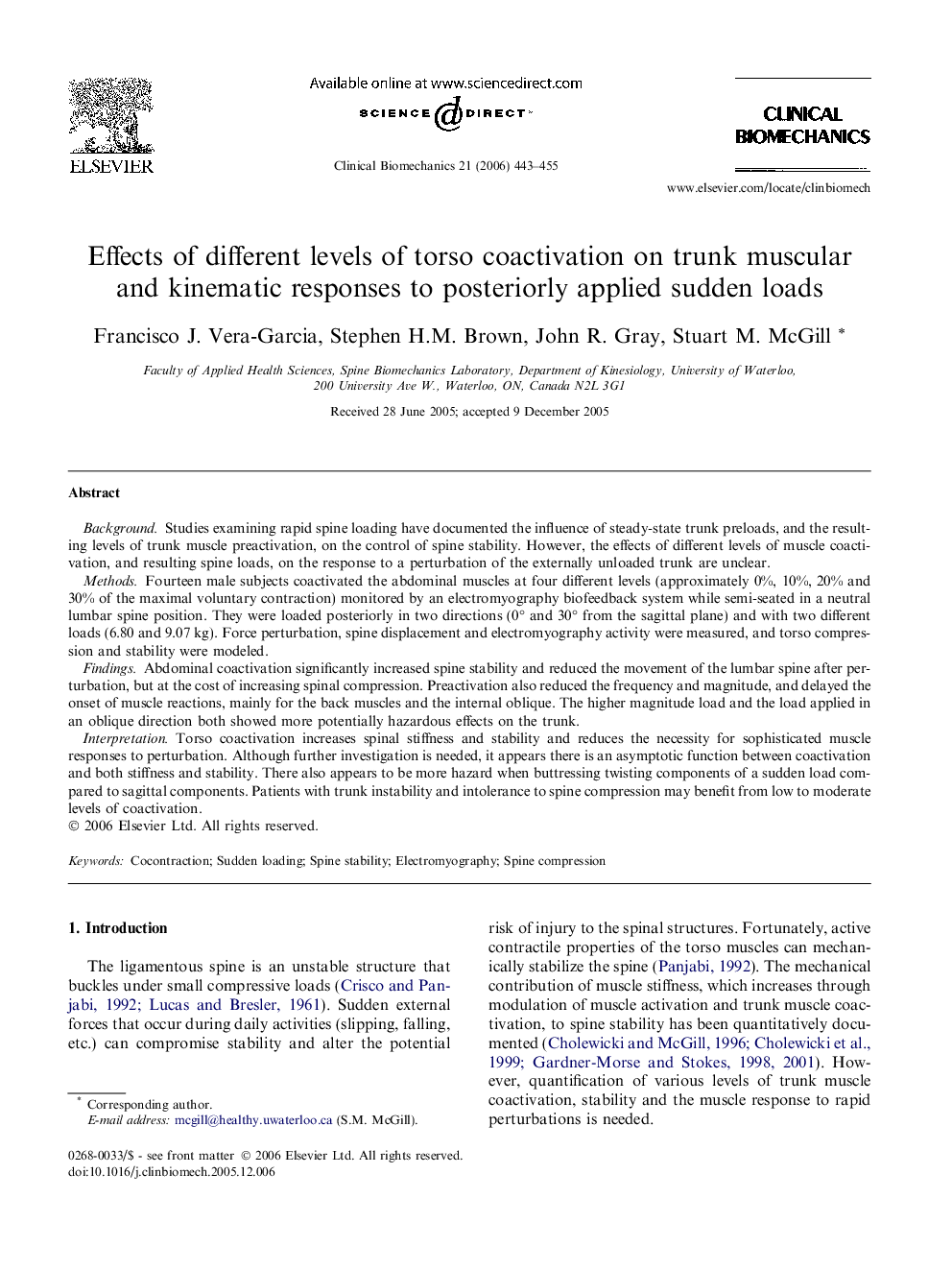| کد مقاله | کد نشریه | سال انتشار | مقاله انگلیسی | نسخه تمام متن |
|---|---|---|---|---|
| 4051739 | 1265010 | 2006 | 13 صفحه PDF | دانلود رایگان |

BackgroundStudies examining rapid spine loading have documented the influence of steady-state trunk preloads, and the resulting levels of trunk muscle preactivation, on the control of spine stability. However, the effects of different levels of muscle coactivation, and resulting spine loads, on the response to a perturbation of the externally unloaded trunk are unclear.MethodsFourteen male subjects coactivated the abdominal muscles at four different levels (approximately 0%, 10%, 20% and 30% of the maximal voluntary contraction) monitored by an electromyography biofeedback system while semi-seated in a neutral lumbar spine position. They were loaded posteriorly in two directions (0° and 30° from the sagittal plane) and with two different loads (6.80 and 9.07 kg). Force perturbation, spine displacement and electromyography activity were measured, and torso compression and stability were modeled.FindingsAbdominal coactivation significantly increased spine stability and reduced the movement of the lumbar spine after perturbation, but at the cost of increasing spinal compression. Preactivation also reduced the frequency and magnitude, and delayed the onset of muscle reactions, mainly for the back muscles and the internal oblique. The higher magnitude load and the load applied in an oblique direction both showed more potentially hazardous effects on the trunk.InterpretationTorso coactivation increases spinal stiffness and stability and reduces the necessity for sophisticated muscle responses to perturbation. Although further investigation is needed, it appears there is an asymptotic function between coactivation and both stiffness and stability. There also appears to be more hazard when buttressing twisting components of a sudden load compared to sagittal components. Patients with trunk instability and intolerance to spine compression may benefit from low to moderate levels of coactivation.
Journal: Clinical Biomechanics - Volume 21, Issue 5, June 2006, Pages 443–455